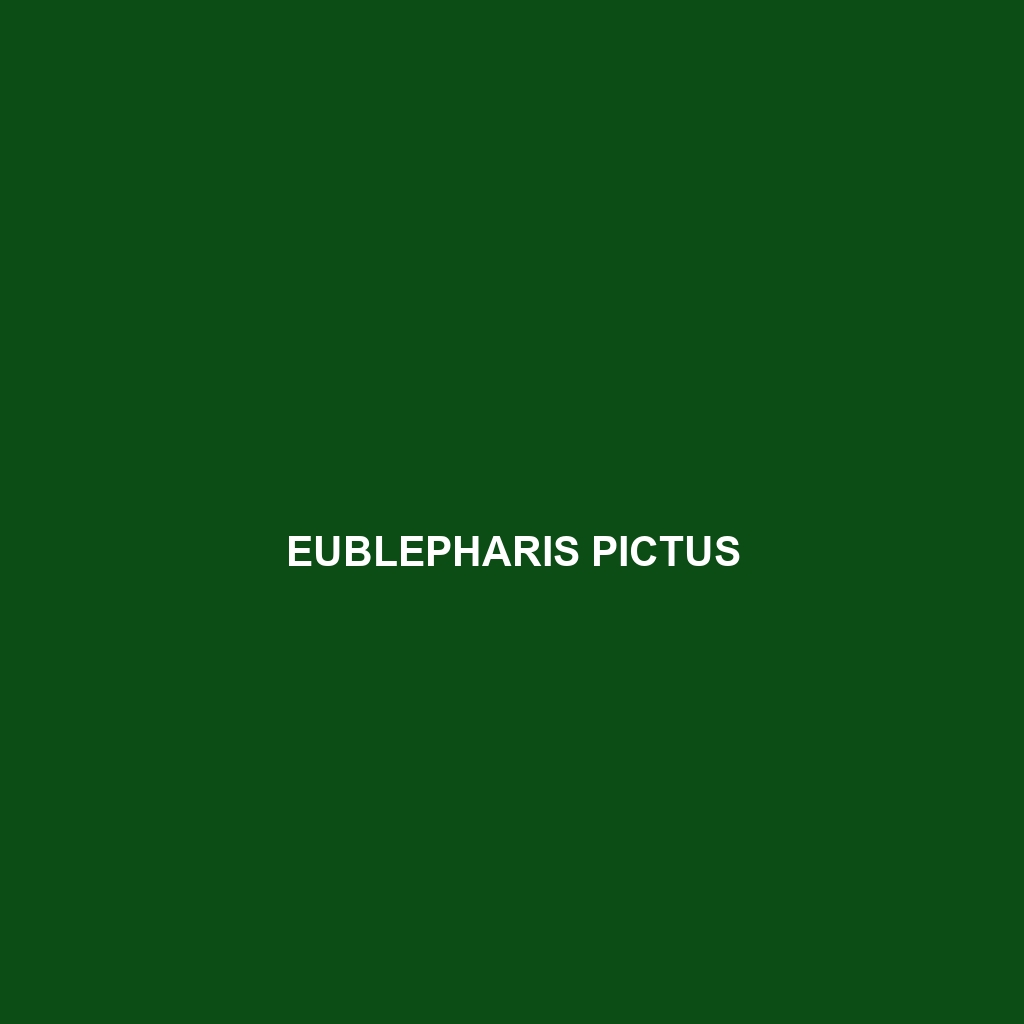Common Name
Eublepharis pictus
Scientific Name
Eublepharis pictus
Habitat
Eublepharis pictus, commonly known as the spotted leopard gecko, is primarily found in the arid regions of Southeast Asia, particularly in countries like India and Pakistan. These geckos prefer dry, rocky areas and grasslands, showcasing adaptability to both savanna and semiarid climates. The species is often spotted in shrubland and temperate forests, where the environmental conditions allow for ample hiding spots and warm basking areas. These habitats typically feature sandy soils and scattered vegetation, which provide perfect camouflage and protection from predators.
Physical Characteristics
The Eublepharis pictus showcases notable physical characteristics that contribute to its appeal among reptile enthusiasts. Adult spotted leopard geckos typically measure between 7 to 10 inches long, with a slender, elongated body. Their distinctive coloration includes a pale yellow or cream base adorned with black or dark brown spots, contributing to their camouflage against rocky backgrounds. One unique feature of this species is its moveable eyelids, unlike many gecko species, which enables them to blink and close their eyes — a characteristic that makes them particularly intriguing to observe. Additionally, their soft skin is covered with small, granular scales, adding to their tactile diversity.
Behavior
Eublepharis pictus exhibits fascinating behavioral patterns, particularly their nocturnal activity. Primarily active at night, these geckos emerge to hunt and explore their environment in search of food. Social interactions among individuals typically involve territorial displays, especially during the mating season when males exhibit strength through vocalizations and physical posturing. Their unique mating rituals are captivating, involving elaborate courtship dances where males may perform head-bobbing and body-waving to attract females.
Diet
The diet of Eublepharis pictus is primarily carnivorous. As insectivores, they predominantly feed on various insects such as crickets, mealworms, and waxworms, making them crucial players in their ecosystem by controlling pest populations. Occasionally, they may indulge in small invertebrates, showcasing their adaptability in food sourcing. These geckos utilize their acute vision to hunt efficiently during the night, relying on their keen eyesight to locate prey in low-light conditions.
Reproduction
The reproductive cycle of Eublepharis pictus is typically seasonal, with mating occurring in the warmer months following the rains. Females store sperm from males after mating and can produce clutches of two eggs every few weeks during the breeding season, which lasts from spring to late summer. The gestation period for the eggs lasts approximately 30 to 60 days, depending on environmental temperature and humidity. Upon hatching, the hatchlings emerge fully formed and independent, ready to take on their habitat. Parental care is virtually nonexistent, as adults do not provide protection or nurture to their young.
Conservation Status
Currently, Eublepharis pictus is classified as of “Least Concern” according to the International Union for Conservation of Nature (IUCN). Despite this status, the species faces threats from habitat loss due to urbanization and agricultural expansion. Conservation efforts are crucial as their natural habitats continue to be altered, emphasizing the need for awareness and protection initiatives to maintain their populations in the wild.
Interesting Facts
One of the most intriguing traits of Eublepharis pictus is its ability to regenerate its tail if lost due to predation or stress, a biological adaptation that enhances its survival. Additionally, this species is popular in the exotic pet trade due to its docile nature and relatively easy care in captivity. Spotted leopard geckos do not have adhesive toe pads like many other geckos; instead, they use their claws to grip surfaces, making them less effective climbers but excellent burrowers.
